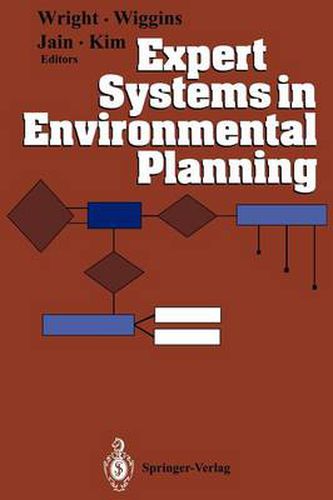Readings Newsletter
Become a Readings Member to make your shopping experience even easier.
Sign in or sign up for free!
You’re not far away from qualifying for FREE standard shipping within Australia
You’ve qualified for FREE standard shipping within Australia
The cart is loading…






This title is printed to order. This book may have been self-published. If so, we cannot guarantee the quality of the content. In the main most books will have gone through the editing process however some may not. We therefore suggest that you be aware of this before ordering this book. If in doubt check either the author or publisher’s details as we are unable to accept any returns unless they are faulty. Please contact us if you have any questions.
The connections between economics, planning, and the environment are receiv ing increased attention among scholars and policy makers in many countries. The common denominator among these three variables is the earth’s life support sys tems, the ecosystems on which the world depends. When we describe our physi cal surroundings as a collection of possible uses, we are establishing linkages between economics, planning, and the environment. Because possible alternative uses compete with each other, and conflicts arise over scarce land resources, the varying environmental impacts of alternative uses are major concerns for the cur rent as well as the next generation. How to achieve sustainable development is the pressing question for today’s environmental professionals. Environmental planners and engineers help us study the implications of our choices, and new technologies and techniques that improve the practice of environmental planning should enhance our ability to protect our future. The depletion of the earth’s natural resources and loss of biodiversity, the deg radation of air, land, and water quality, the accumulation of greenhouse gases leading to changes in our climate, and the depletion of the ozone layer comprise only a partial list of environmental issues that concern our policy makers. To sup port their decisions, environmental planning must be a multidimensional and multidisciplinary activity that incorporates social, economic, political, geograph ical, and technical factors. Solutions for problems in these areas frequently re quire not only numerical analyses but also heuristic analyses, which in turn depend on the intuitive judgements of planners and engineers.
$9.00 standard shipping within Australia
FREE standard shipping within Australia for orders over $100.00
Express & International shipping calculated at checkout
This title is printed to order. This book may have been self-published. If so, we cannot guarantee the quality of the content. In the main most books will have gone through the editing process however some may not. We therefore suggest that you be aware of this before ordering this book. If in doubt check either the author or publisher’s details as we are unable to accept any returns unless they are faulty. Please contact us if you have any questions.
The connections between economics, planning, and the environment are receiv ing increased attention among scholars and policy makers in many countries. The common denominator among these three variables is the earth’s life support sys tems, the ecosystems on which the world depends. When we describe our physi cal surroundings as a collection of possible uses, we are establishing linkages between economics, planning, and the environment. Because possible alternative uses compete with each other, and conflicts arise over scarce land resources, the varying environmental impacts of alternative uses are major concerns for the cur rent as well as the next generation. How to achieve sustainable development is the pressing question for today’s environmental professionals. Environmental planners and engineers help us study the implications of our choices, and new technologies and techniques that improve the practice of environmental planning should enhance our ability to protect our future. The depletion of the earth’s natural resources and loss of biodiversity, the deg radation of air, land, and water quality, the accumulation of greenhouse gases leading to changes in our climate, and the depletion of the ozone layer comprise only a partial list of environmental issues that concern our policy makers. To sup port their decisions, environmental planning must be a multidimensional and multidisciplinary activity that incorporates social, economic, political, geograph ical, and technical factors. Solutions for problems in these areas frequently re quire not only numerical analyses but also heuristic analyses, which in turn depend on the intuitive judgements of planners and engineers.